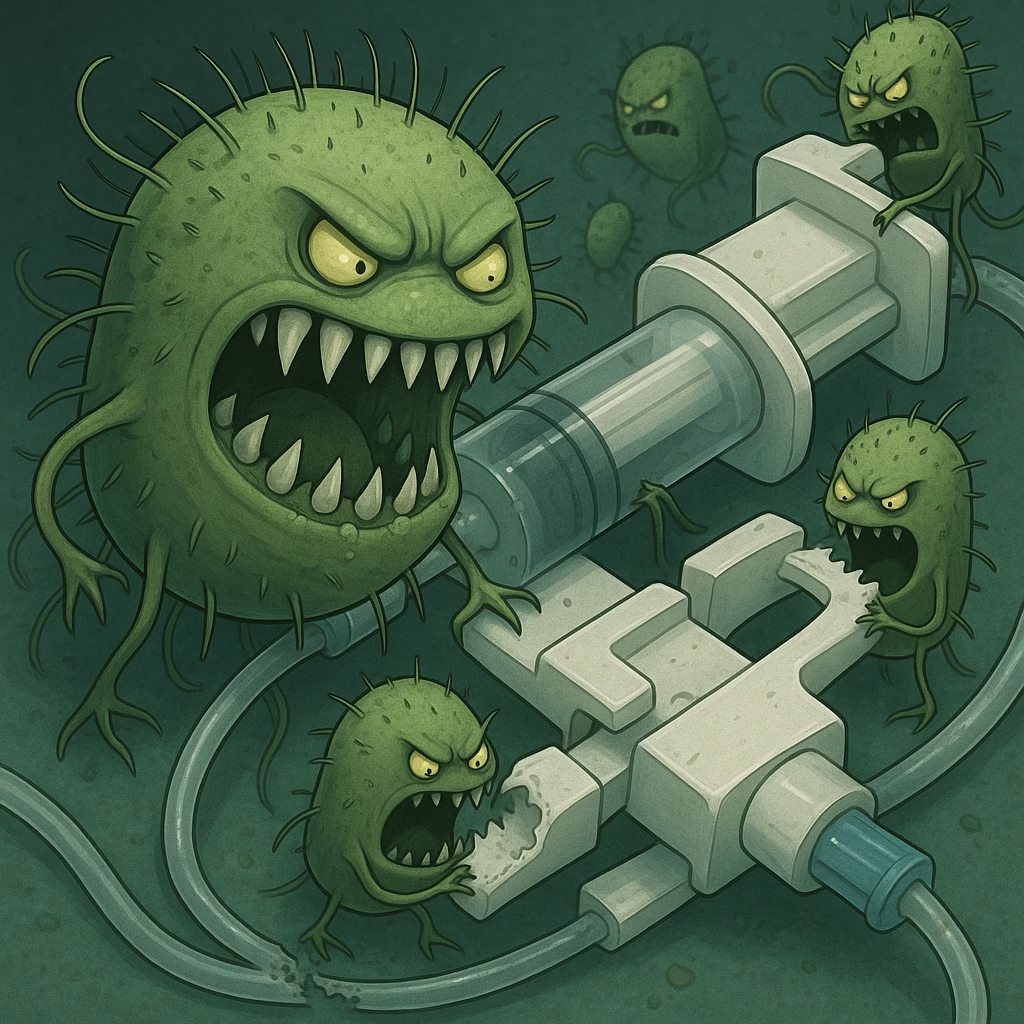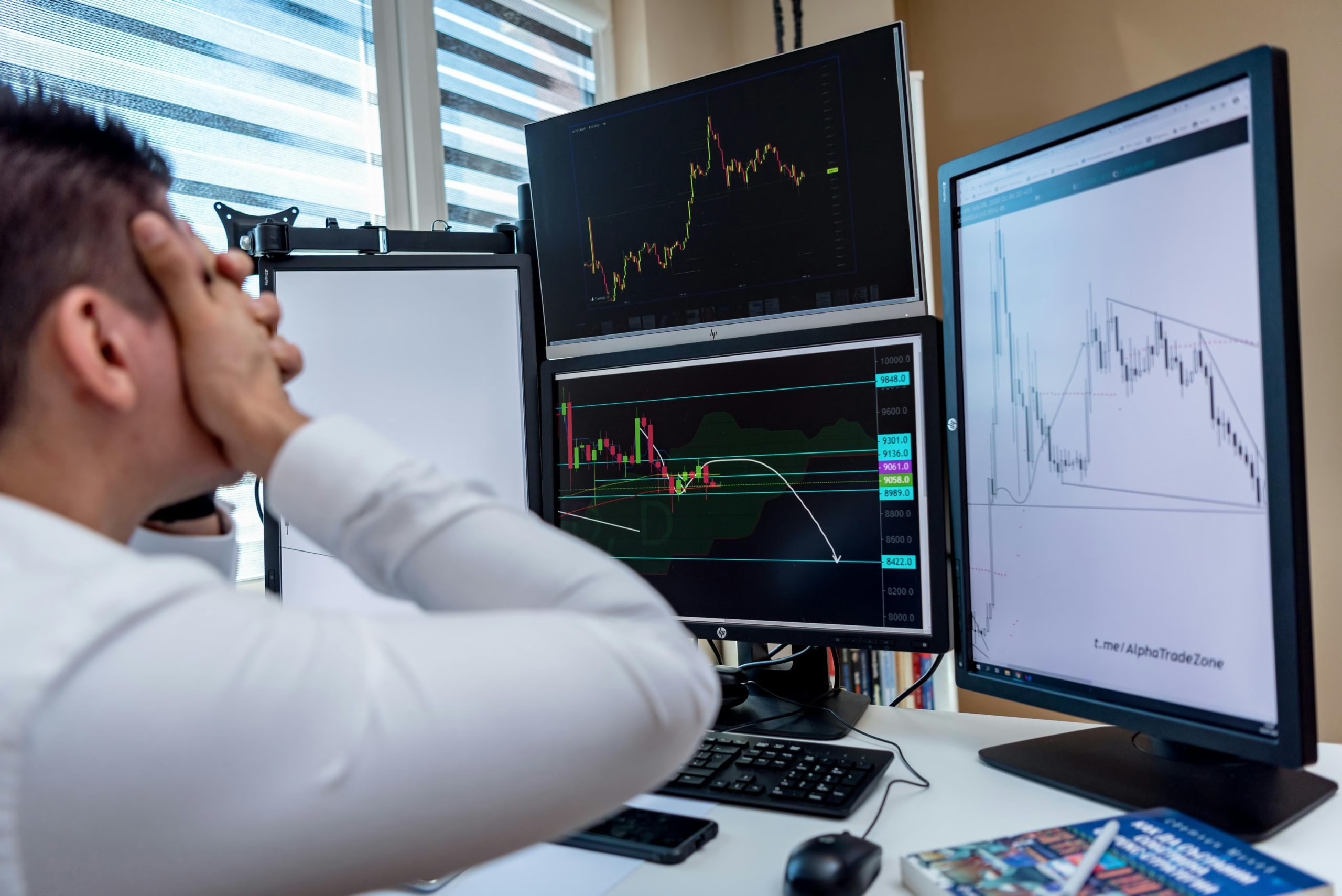
The Plastic Feast: How Medical Plastic Devices Feed Deadly Bacteria – A Hidden Hospital Danger

Some news stories pass quietly, while others grip us with fear and urgency. One such revelation shook the medical world: a deadly bacterium, Pseudomonas aeruginosa, can feed on biodegradable medical plastics used in surgeries, wound dressings, and implants. This isn’t science fiction; it’s a global healthcare crisis unfolding silently within hospital walls.

Medical Plastic: A Bacterial Buffet
Stitches, implants, wound covers—common medical devices crafted from biodegradable plastic—are supposed to be safe. Designed to break down naturally, these materials were considered body-compatible and eco-friendly. Yet, researchers found that Pseudomonas aeruginosa produces an enzyme, Pap1, that breaks these plastics down into digestible compounds. What was once a life-saving material now serves as nourishment for deadly bacteria.
These findings highlight the unforeseen consequences of material innovation. While biodegradable plastics were celebrated for their ability to decompose in the environment and minimize waste, they inadvertently opened a new ecological niche for opportunistic pathogens. Hospitals that adopted these materials for ethical and ecological reasons must now confront a grim trade-off between sustainability and infection control. Patients with pre-existing conditions, compromised immune systems, or long-term implants are particularly vulnerable, requiring vigilant monitoring and tailored treatment strategies to mitigate risks associated with these materials.
Furthermore, these bacteria are not limited to a specific geography or climate. From large metropolitan hospitals to rural clinics, the risk is universal. The global nature of medical supply chains means that the same biodegradable plastic components are distributed and used worldwide. This global distribution amplifies the urgency of addressing the issue comprehensively rather than treating it as a localized concern.
Biofilm: The Invisible Fortress

When this bacterium consumes plastic, it doesn’t just survive—it builds a biofilm. This slimy fortress shields the colony from antibiotics and immune responses, making infections harder to treat. Biofilms are already notorious in medical settings, but the ability to thrive on plastic elevates the threat level dramatically. Now, patients with implants or biodegradable stitches face a new kind of infection risk: fortified, persistent, and difficult to eradicate.
Biofilm formation represents a pivotal survival mechanism. Inside this complex structure, bacteria communicate, share resources, and even exchange genetic material, further enhancing their resilience. Conventional sterilization techniques and antibiotic treatments often fail to penetrate these biofilms, allowing infections to persist despite aggressive medical intervention. The result is a significant increase in patient morbidity, extended hospital stays, and an urgent need for new treatment protocols specifically targeting biofilm-associated infections. Research into biofilm-disrupting agents and surface coatings that resist microbial colonization is now more critical than ever.
Additionally, biofilm-related complications are not exclusive to infections. They can lead to the mechanical failure of medical devices, increasing the likelihood of surgical revisions or device replacements. This further stresses healthcare resources and underscores the importance of integrating biofilm-resistant materials into future medical device designs.
Genetic Experiment: The Spread of the Plastic-Eating Gene

In a chilling experiment, scientists transferred the Pap1 gene to another bacterial species. The result? That species also began degrading plastic. This indicates that the trait could spread among bacteria, making biodegradable plastics universally vulnerable. One enzyme, one gene transfer, and a hospital’s safety infrastructure could be undermined.
Horizontal gene transfer is a well-documented phenomenon in microbiology, facilitating the rapid evolution of bacterial populations. In hospital environments, where multiple bacterial species coexist under selective pressures from antibiotics and sterilization measures, such gene transfers can happen at an accelerated pace. This dynamic not only exacerbates the risk associated with medical plastics but also threatens to compromise infection control protocols across various healthcare facilities. Strategies such as implementing genetic monitoring and deploying antimicrobial stewardship programs will be crucial to contain this emergent threat.
Moreover, the potential for gene transfer extends beyond clinical settings. Environmental exposure from improperly disposed medical waste could lead to the spread of plastic-degrading capabilities among environmental bacteria, posing broader ecological risks. Such developments could further complicate waste management strategies and necessitate new biosecurity measures at local and international levels.
Hospitals: Safe Havens or Incubators?

Hospitals are symbols of healing, but what if the very tools meant to save lives fuel microbial threats instead? Devices such as stitches, implants, and bandages may unintentionally assist bacteria in becoming more resilient. The line between medical sanctuary and microbial incubator is thinner than we thought. This demands immediate attention from healthcare providers, manufacturers, and regulators alike.
The architecture and operational procedures of hospitals must evolve to address this reality. Enhanced sterilization technologies, such as plasma-based cleaning systems or ultraviolet light sanitation, could be implemented to mitigate risks. Staff training programs should be updated to raise awareness about the potential dangers of biodegradable medical devices. Additionally, patient care protocols might require adjustment, emphasizing preventive measures and early detection of biofilm-related infections. The healthcare industry must prioritize innovation that balances ecological consciousness with patient safety.
Patient trust is also at stake. Transparency about the materials used in medical procedures and their associated risks should become standard practice. By fostering open communication, healthcare providers can help patients make informed decisions about their treatment options, reducing anxiety and enhancing overall care outcomes.
Hospital Infection Control Strategies
Essential Patient Safety Tips in Healthcare
The Economic Impact of Medical Plastic Infections

The consequences aren’t limited to patient health. Increased infection rates mean higher treatment costs, prolonged hospital stays, and potential reputational damage for healthcare institutions. Insurance companies may adjust premiums, affecting both institutions and patients. Manufacturers might face product recalls, regulatory fines, and higher R&D costs. Smaller hospitals, especially in developing countries, could struggle with compliance and added financial burdens, deepening healthcare inequalities.
Pharmaceutical companies could see fluctuating demand for antibiotics, complicating supply chains and market dynamics. Investors might face volatility in healthcare stocks, while education sectors would need to revise curriculums to address these new challenges. Even legal and consultancy industries may experience increased demand as regulatory complexities and liability cases rise. The ripple effect is vast, underscoring the need for proactive measures and global collaboration.
Innovative financing models and public-private partnerships may be necessary to support smaller healthcare providers and ensure equitable access to safer medical technologies. Governments and international organizations should explore subsidy programs or shared investment initiatives to help offset the costs associated with transitioning to safer alternatives.
Environmental and Ethical Implications

Biodegradable plastics were introduced to reduce environmental harm, yet this discovery complicates their narrative. Are we exchanging one form of pollution for another? The ethical dilemma now includes weighing ecological benefits against public health risks. Should we prioritize environmental sustainability if it compromises patient safety? This complex question requires balanced, transparent policymaking that involves scientists, ethicists, healthcare providers, and patient advocates.
Furthermore, public perception and trust in medical innovation could be impacted. As awareness grows, patients may demand greater transparency regarding the materials used in their treatments. Healthcare marketing and communication strategies will need to adapt, focusing on honesty, accountability, and proactive risk management. Ethical manufacturing practices and responsible sourcing of materials will become key differentiators for brands in the healthcare industry, shaping both market dynamics and regulatory landscapes.
Long-term solutions must integrate a holistic approach, considering not only medical efficacy but also environmental impact and societal values. This requires fostering interdisciplinary collaboration between materials scientists, microbiologists, medical professionals, and environmental experts to create comprehensive, future-proof healthcare strategies.
A Call to Action for the Scientific Community

With the threat identified, the path forward requires united global action. Research must focus on developing new materials that remain body-compatible but resist bacterial degradation. Governments should establish stricter regulations and testing protocols. Hospitals must revise sterilization and material usage practices to minimize risks. Cross-sector collaboration will be essential to prevent this silent threat from escalating further.
In parallel, there is an opportunity to foster global educational initiatives that spread awareness about this emerging risk. Training programs for medical staff, engineers, and regulatory bodies should be updated to include knowledge about plastic-eating bacteria and biofilm management. International symposiums, research grants, and policy frameworks could accelerate the development of alternative solutions, driving innovation that prioritizes both safety and sustainability. By acting collectively, we can mitigate the risks posed by these microbial adaptations and safeguard public health for future generations.
Global cooperation through platforms like the World Health Organization and the United Nations can facilitate knowledge sharing and establish unified standards. International coalitions could help pool resources and share research findings, ensuring that solutions are accessible across borders and benefit both developed and developing countries alike.
Suggested Resources and Further Reading:
- National Center for Biotechnology Information (NCBI)
- World Health Organization (WHO)
- Centers for Disease Control and Prevention (CDC)
Time to Act

Science has illuminated the danger. Now it’s up to us—medical professionals, policymakers, manufacturers, and citizens—to respond. The question isn’t just whether hospitals are feeding the enemy, but what we’re willing to do to stop it. Proactive change is no longer optional; it’s essential for preserving both public health and trust in modern medicine.
If you found this article insightful, consider sharing it or discussing it with healthcare professionals in your community. Stay informed, stay safe.
Published by Neosiomix – Exploring Hidden Healthcare Risks






